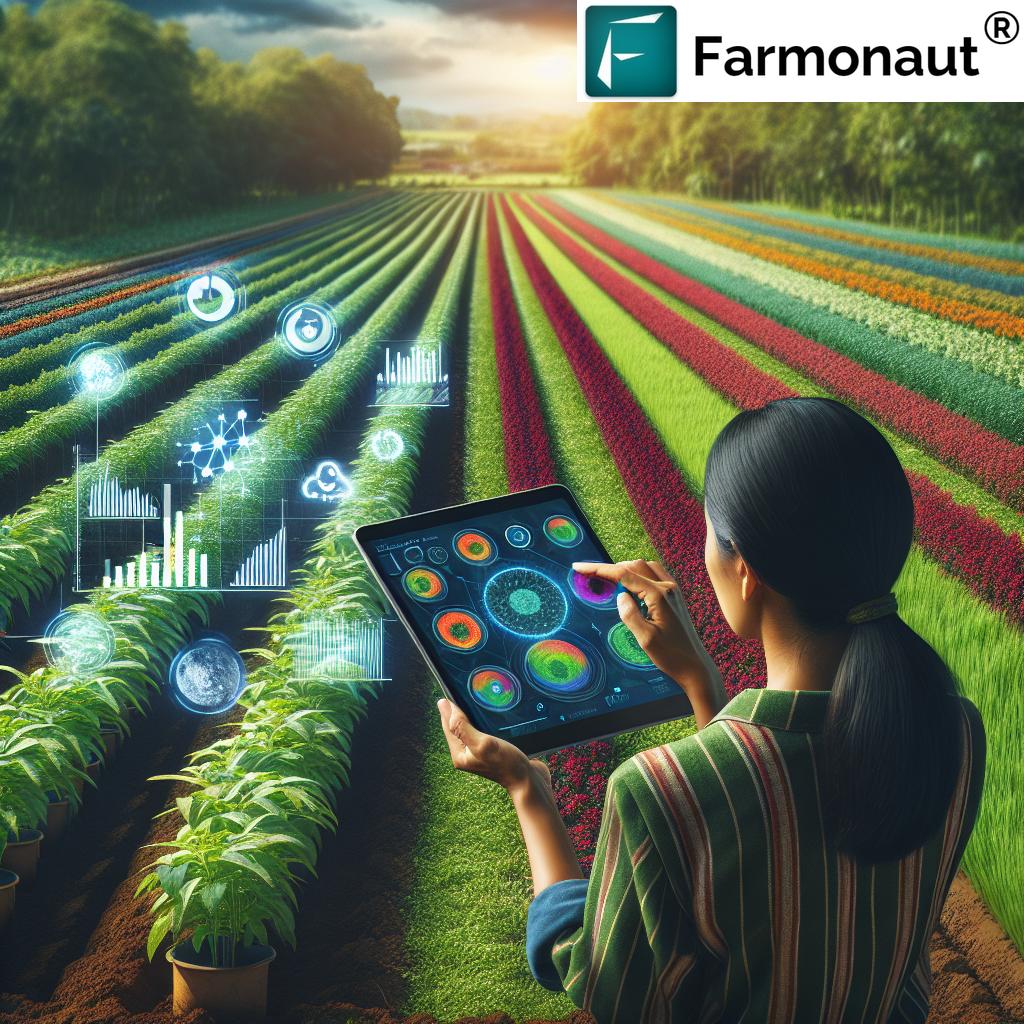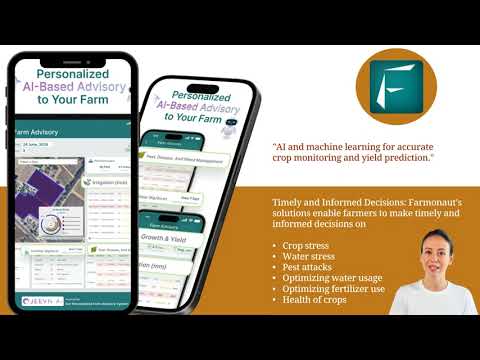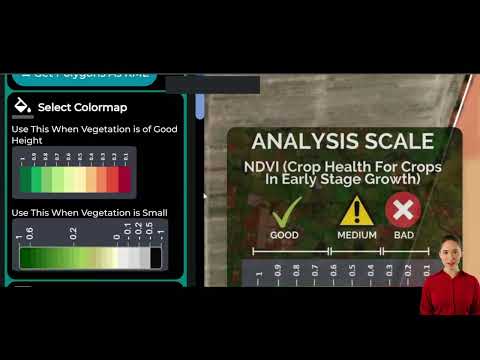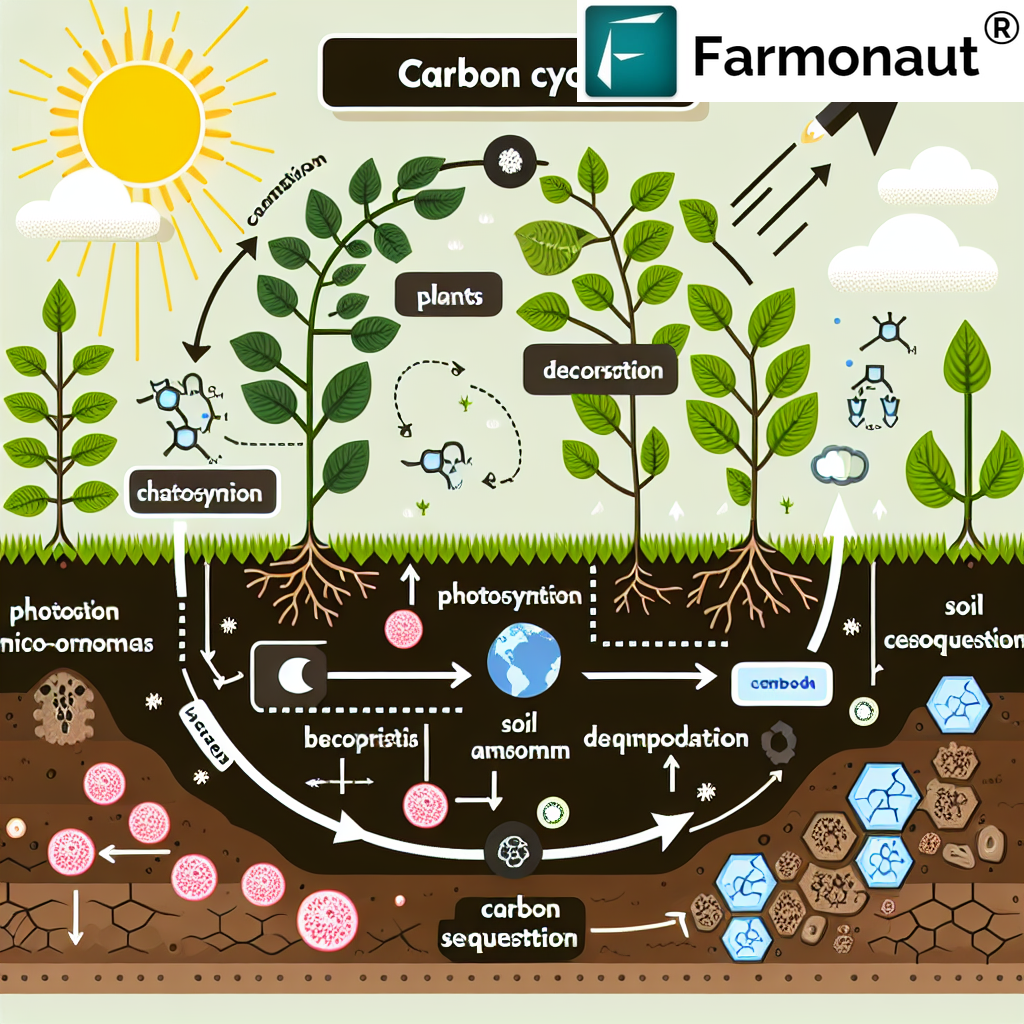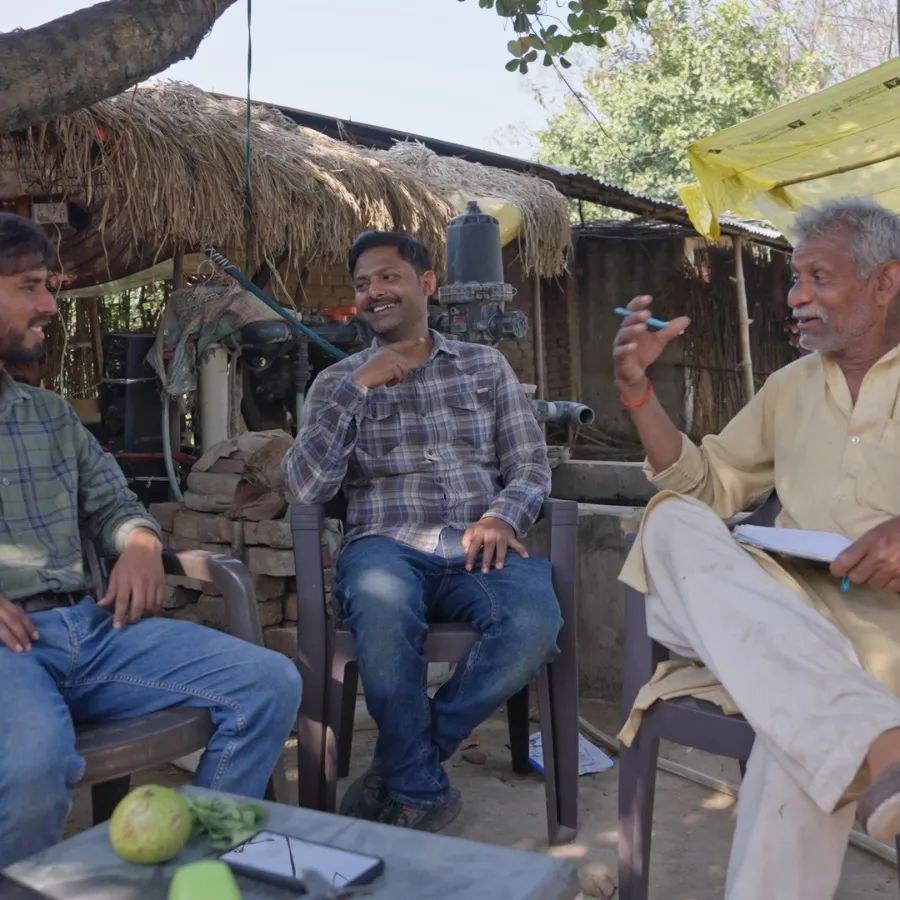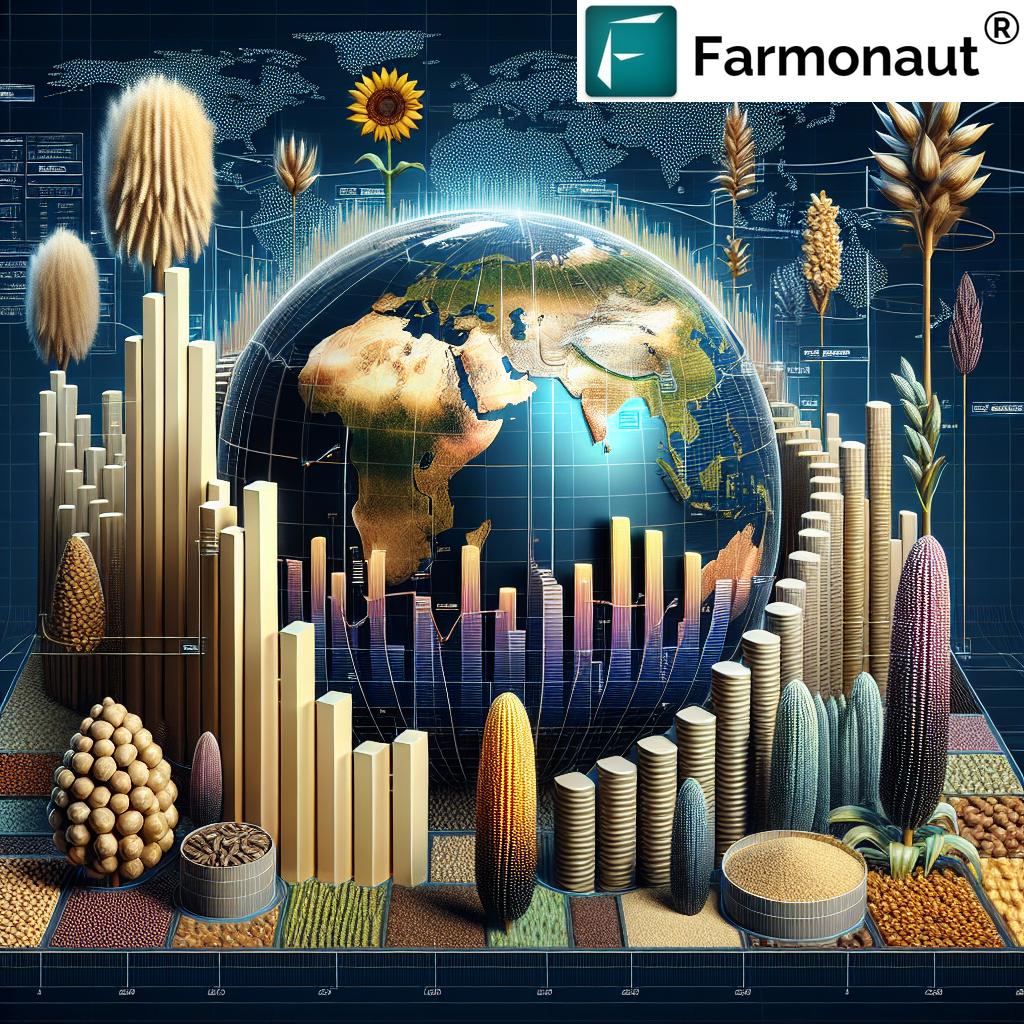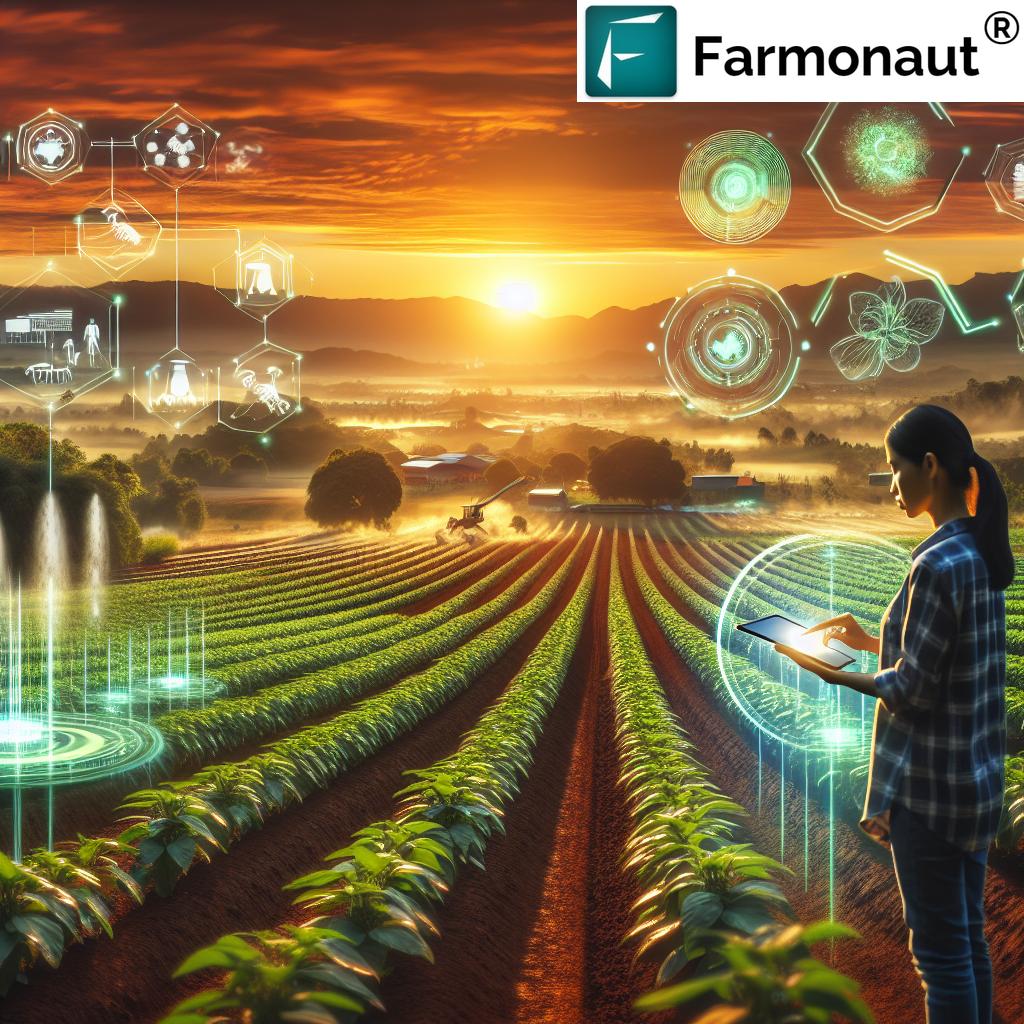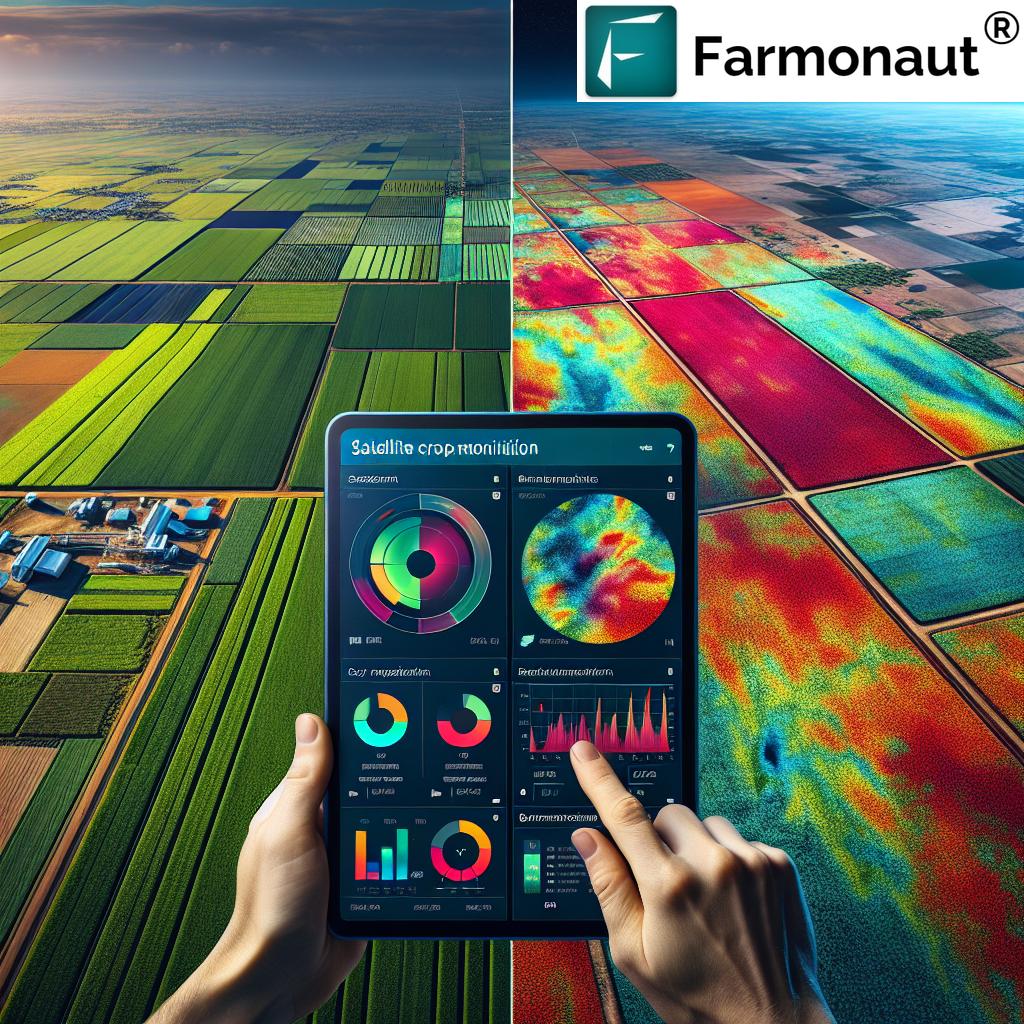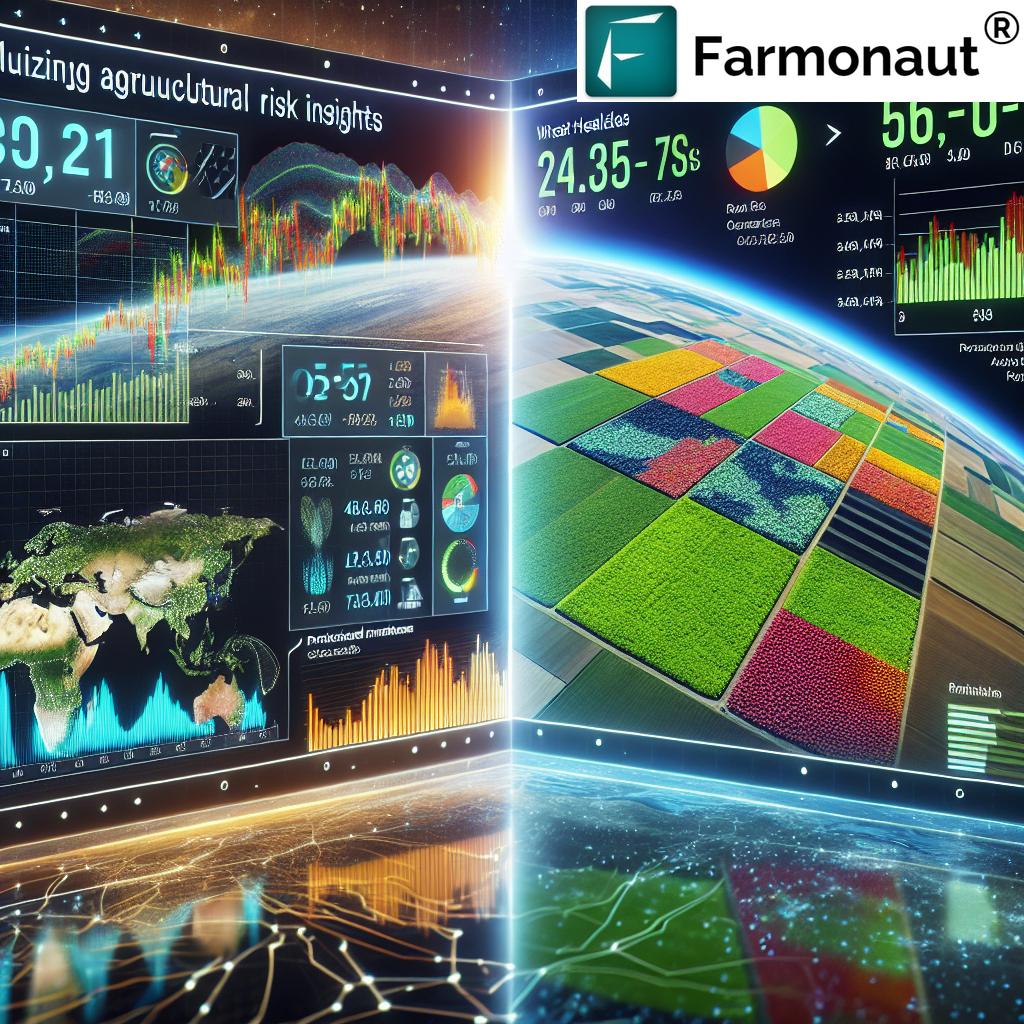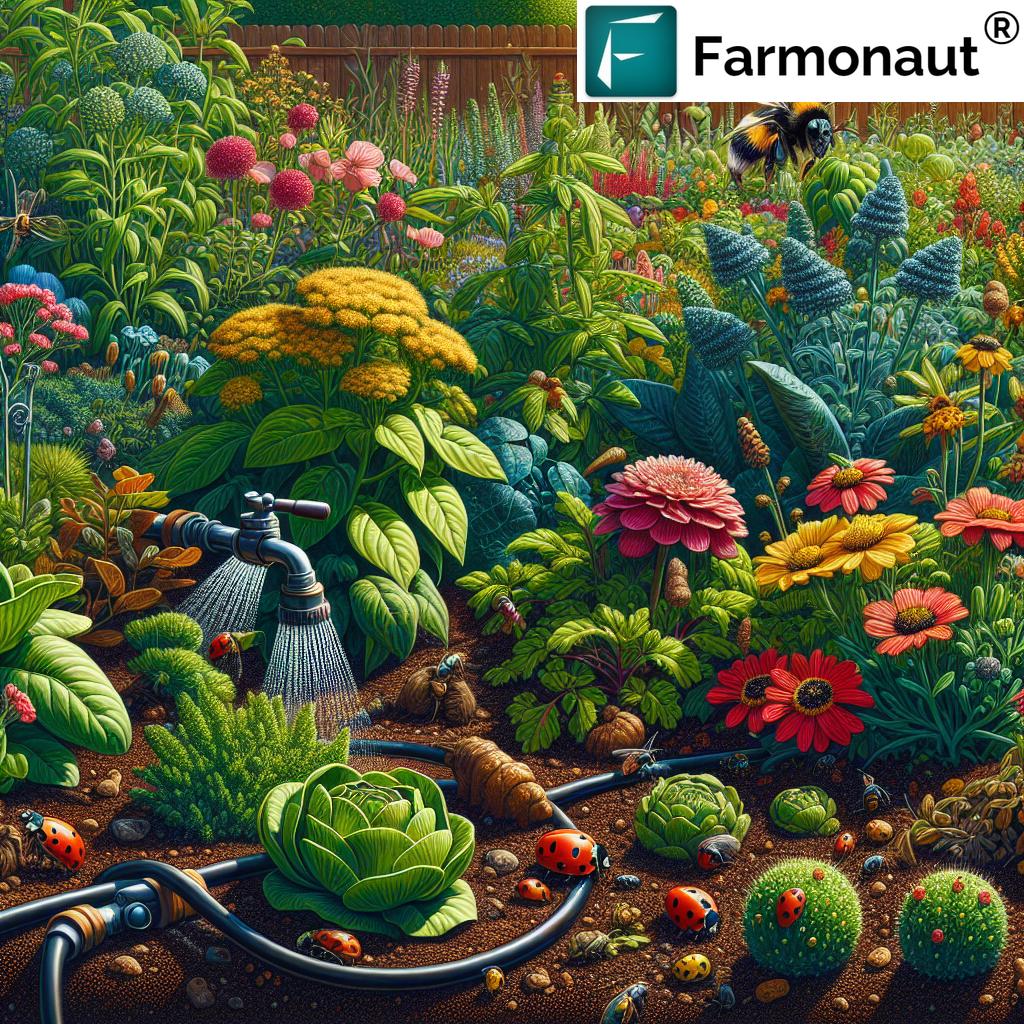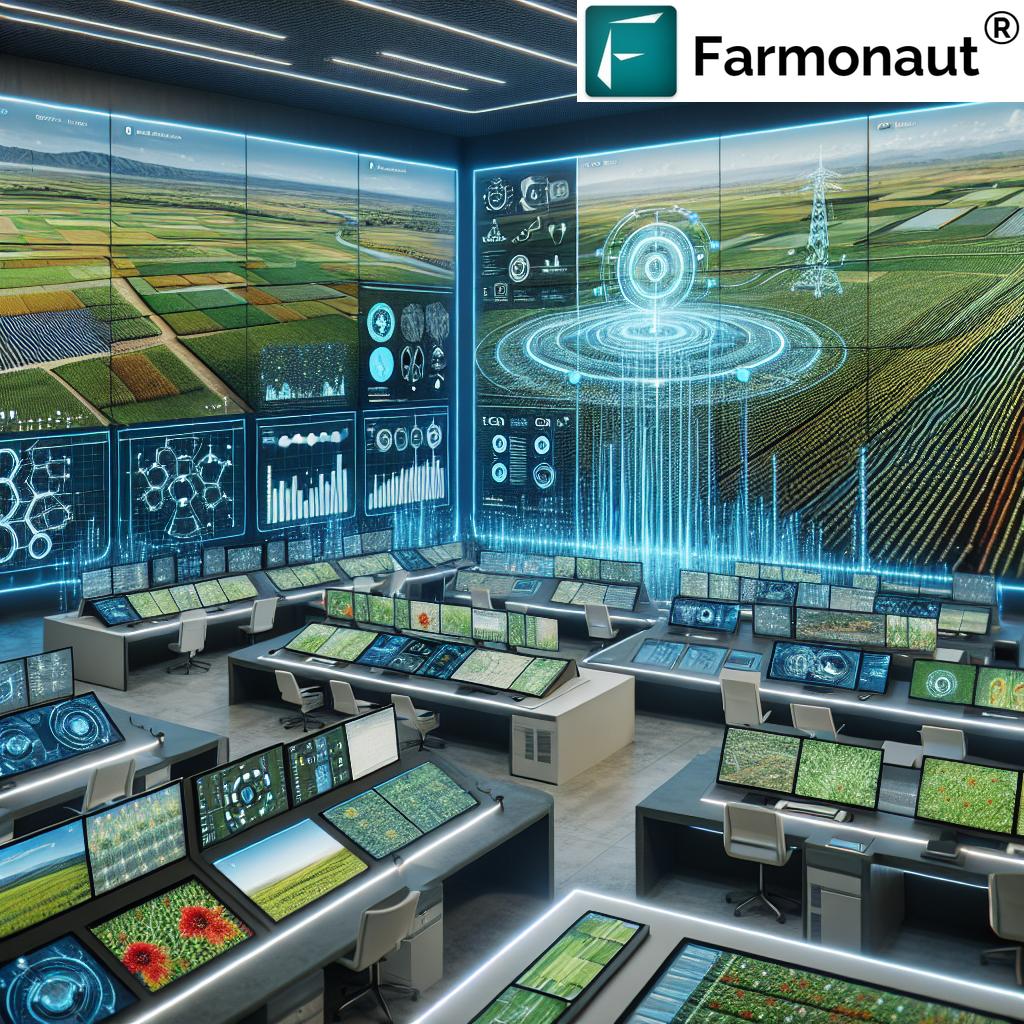Crop Planning Software: 7 Secrets to Double Farm Yields
“Farmers using crop planning software report up to 50% higher yields compared to traditional methods.”
In the rapidly evolving sectors of agriculture, farming, and forestry, crop planning software has emerged as an indispensable tool for optimizing operations, enhancing productivity, and promoting sustainability. As pioneering digital farming platforms become central to modern farm management, farmers now have unprecedented access to data-driven insights, precision agriculture tools, and sustainability-oriented management approaches. In this comprehensive guide, we’ll uncover the 7 secrets of crop planning software that empower us to double farm yields, optimize resource usage, and transform the future of food production.
As we discover how innovative software solutions and agricultural technology platforms like Farmonaut are driving this revolution, we’ll also provide actionable comparisons, clear explanations, and feature-rich insights from leading digital tools.
Understanding Crop Planning Software in Modern Agriculture
Crop planning software encompasses advanced digital tools designed to assist in the strategic planning and management of crop production. As we navigate the complexities of modern farm management, these platforms empower us to integrate soil health metrics, weather data, crop rotation schedules, pest and resource management strategies, and provide comprehensive, tailored plans for specific farming operations.
By leveraging crop planning platforms, we can optimize every aspect of the agricultural cycle—from planting schedules and crop rotation to input allocation and yield prediction. The integration of real-time analytics, AI-driven models, and remote sensing enables both farmers and agronomists to manage operations efficiently, mitigate risks, and foster sustainability.
- Data-Driven Agriculture: Crop planning software is at the core of data-driven agriculture, transforming raw information into actionable insights for increased productivity.
- Optimization & Precision: These platforms enable us to act with unprecedented accuracy in input use, irrigation, fertilization, and pest management—hallmarks of precision agriculture tools and digital farming platforms.
Example: A digital platform that integrates soil testing results, five-year weather patterns, and real-time pest alerts can recommend the ideal crop plan for a given region or field, maximizing both yield and resource use efficiency.
Key Features & Benefits of Crop Planning Software
Let’s dive into the most transformative features and benefits that modern crop planning software and digital farm management platforms provide:
-
Data-Driven Decision Making
By analyzing historical crop data, evaluating current soil and weather conditions, and leveraging predictive models, our decisions are backed by science. This increases the accuracy of planting schedules, input allocation, and risk management. -
Resource Optimization in Agriculture
Efficient resource utilization is crucial for modern farming. Crop planning software optimizes inputs like water, nitrogen, fertilizers, and pesticides, reducing both waste and costs while promoting environmental sustainability in farming. -
Real-Time Monitoring and Alerts
Advanced monitoring features—such as crop health alerts, weather tracking, and automated pest management notifies—ensure timely intervention and protective measures to minimize yield losses. -
Comprehensive Financial Management
Managing the budget and financial resources is streamlined with digital farm management software solutions. Crop planning platforms help us track costs, forecast expenses, and maximize profitability. -
Enhanced Environmental Sustainability
By reducing chemical inputs, optimizing water usage, and monitoring carbon footprints, these tools promote sustainable farming practices.
We recommend Farmonaut’s Carbon Footprinting platform for advanced emissions tracking and regulatory compliance. -
Improved Yield Prediction
Forecasting tools leverage agronomic data and AI models, enabling us to predict yields with higher precision, plan market supply, and reduce wastage. -
Simplified Compliance and Traceability
Blockchain-powered traceability solutions ensure transparent tracking from farm to market. Farmonaut’s Product Traceability platform advances supply chain transparency, supporting food safety and authenticity.
Comparison Table: Traditional vs. Digital Crop Planning
| Aspect | Traditional Crop Planning | Crop Planning Software | Estimated Improvement (%) |
|---|---|---|---|
| Yield Increase | Manual guesswork; variable results | AI-powered data analysis delivers optimized planting strategies | +30% to +50% |
| Input Cost Reduction | Overuse/misuse of fertilizers and water | Resource optimization, automated tracking, and timely interventions | -25% to -40% |
| Planning Time | Weeks of manual calculations/research | Automated, comprehensive plans in minutes | -80% |
| Resource Optimization | Low; non-targeted irrigation and chemicals | Precision geolocation and real-time adjustment | +40% |
| Environmental Impact | Excess runoff, erosion, higher emissions | Sustainable practices; carbon footprint tracking, optimized usage | -35% |
“Over 70% of digitally managed farms achieve improved resource efficiency with advanced crop planning platforms.”
Leading Crop Planning Software Solutions: Top Platforms
When considering the best crop planning software for our needs, it’s helpful to compare features and integration capabilities across the agtech landscape. Here’s an overview of the most prominent solutions:
1. Granular
- Company: US-based leader in digital farm management software
- Features: Financial planning, resource allocation, agronomic input management, and performance analytics
- Benefits: Streamlines data management and maximizes farm returns
2. Adapt-N
- Used: Developed at Cornell, field-specific nitrogen recommendations for financial and environmental performance
- Features: Integrates soil, weather, and crop data for precision input management
3. BioMA
- Framework: Public domain biophysical modeling platform for agriculture/environment research
- Benefits: Used by EU for predicting crop production under climate scenarios
4. Conservis
- Overview: Comprehensive farm management software with planning, budgeting, inventory, production & harvest tracking
- Benefits: Enables data-driven business decision making and operational clarity
5. AgriXP
- Features: Free online crop record-keeping, calculators, activity tracking
- Benefits: Ideal for smallholders needing basic digital record keeping for improved oversight
Next-Gen Solution: Farmonaut
- Platform: Farmonaut offers global satellite-based farm management solutions through web/apps, API, and mobile.
- Technologies: AI, machine learning, and blockchain integration for real-time crop health monitoring, AI-based farm advisory, traceability, and carbon tracking.
- Benefits: Affordable, scalable, and accessible to all scales of farmers, agribusinesses, and institutions.
Farmonaut’s satellite imagery and analytics make data-driven agriculture a reality—enabling us to monitor field health, track input performance, and ensure sustainability at scale.
7 Secrets to Double Farm Yields with Crop Planning Software
Discover what sets apart the modern digital crop planner from conventional approaches, empowering us to multiply yields, reduce risks, and promote long-term farm profitability:
-
Leverage Data-Driven Insights for Informed Decisions
By analyzing historical crop yields, weather patterns, and monitoring real-time variables, farmers and agronomists receive personalized recommendations on planting, irrigation, and input schedules. Integration with platforms like Farmonaut’s Crop Plantation and Forest Advisory ensures these insights cover diverse crops and geographies.
-
Precision Resource Allocation
Optimize every litre of water, kilogram of fertilizer, and unit of pesticide with precision. Resource optimization in agriculture is achieved using geolocation and sensor-driven advisories—for instance, Farmonaut’s AI-powered Jeevn advisory system ensures inputs are delivered when and where they are needed most.
-
Maximize Crop Health Monitoring
Automated alerts for pest outbreaks, nutrient deficiencies, and soil moisture levels enable timely intervention. Platforms that provide real-time crop health monitoring—such as Farmonaut’s satellite-based dashboards—reduce crop loss risk, support sustainability, and optimize overall productivity.
-
Utilize Predictive Models for Crop Yield Forecasting
Effective yield prediction tools use machine learning and AI to forecast market supply, adjust plans for upcoming seasons, and minimize wastage. This is especially powerful when integrated with large scale farm management platforms, which centralize plantation data, soil health, and remote sensing analytics.
-
Enable Sustainable Practices with Technology
Crop planning software provides actionable environmental sustainability reports, from carbon footprinting to soil conservation and water usage management. Farmonaut’s carbon tracking solution offers real-time feedback on emissions, encouraging compliance and stewardship.
-
Simplify Financial Planning & Risk Mitigation
Digital platforms enable us to track costs per hectare, manage budgets, and identify expense-saving opportunities. By partnering with financial institutions, Farmonaut offers satellite-based crop loan & insurance verification, improving access to finance and minimizing lending risk.
-
Unlock Operational Efficiency With Fleet and Resource Management
Precision tracking of machinery, vehicles, and field operations eliminates redundancy and reduces downtime. Farmonaut’s fleet management module optimizes logistics—lowering operational costs, boosting safety, and improving the overall efficiency of agricultural assets.
Integration with Emerging Technologies in Crop Planning Software
The future of crop planning software is intrinsically linked to advancements in AI, machine learning, IoT, and blockchain. Here’s how these innovations are transforming the industry:
- Artificial Intelligence & Machine Learning: Accelerate data analysis and uncover insights across soil quality, input efficiency, and production anomalies. AI enables predictive recommendations, improving the accuracy of field-specific plans.
Farmonaut’s Jeevn AI delivers personalized real-time advisories by analyzing satellite and weather data, transforming the way we manage crop health and yields. - Remote Sensing and Satellite Imagery: Real-time crop growth monitoring, soil health surveillance, and precision input advisories are possible through high-resolution satellite data.
Farmonaut’s core offering makes data-driven agriculture both scalable and affordable. - Internet of Things (IoT) and Sensor Devices: On-farm sensors provide continuous monitoring of environmental conditions, soil moisture, and input application, enabling rapid response to variable field dynamics.
- Cloud Computing & APIs: Crop data integration, seamless updates, and cross-platform interoperability are empowered by robust cloud backends.
For developers, Farmonaut’s API and API developer documentation enable agtech integration with custom applications, research software, and institutional dashboards. - Blockchain Technology: Secure data and product traceability, supporting both farmgate-to-table transparency and compliance with industry regulations.
Explore Farmonaut’s blockchain-powered traceability solution for supply chain integrity.
Farmonaut: Advanced Precision Agriculture Solutions for Every Farm
Farmonaut is at the forefront of the digital agriculture revolution—making precision farming affordable, accessible, and scalable for every type of farmer. Leveraging a unique blend of satellite-based crop health monitoring, AI-driven advisory, carbon tracking, and blockchain traceability, Farmonaut sets new standards for resource optimization in agriculture and data-driven farm management.
-
Satellite Crop Health Monitoring:
Advanced remote sensing using multispectral imagery delivers field health reports, NDVI analysis, and soil moisture data straight to your mobile or desktop—without expensive in-field hardware. -
AI-Based Jeevn Farm Advisory:
Custom, real-time recommendations delivered by the Jeevn AI system help optimize every decision—from planting schedules to nutrient applications, based on local weather and environmental conditions. -
Blockchain-Based Traceability:
Empowers food producers and processors with end-to-end product traceability for quality, safety, and trust. -
Carbon Footprint Tracking:
Advanced emissions analytics helps farms lower their environmental impact and comply with emerging regulations. -
Fleet and Resource Management:
Optimize vehicle usage and input delivery, centralizing logistics for operational efficiency. -
API Integration & Scalability:
Connect Farmonaut data to third-party applications with robust APIs, custom alerts, and flexible pricing tiers for every scale of operation—from individual farmers to institutional agribusinesses. -
Benefits:
- Lower operational costs without hardware investment
- Increase farm productivity with real-time actionable insights
- Monitor sustainability and empower responsible farming practices
- Access satellite-based verification for crop loans and insurance
- Streamlined integration for governments, research organizations, and corporate clients
Challenges & Considerations When Adopting Crop Planning Software
While the benefits of digital crop planning are tremendous, several practical challenges and considerations impact successful adoption:
-
Data Accuracy and Integration:
Effective operation relies on the quality, integration, and consistency of incoming datasets. Incomplete or outdated data can result in suboptimal advice or mismanaged resources. -
User Training and Platform Adoption:
Successful platform usage often requires training and ongoing support. Resistance to digital change can slow the transition from traditional processes. -
Cost Implications and Digital Divide:
While solutions like Farmonaut are designed for affordability and scale, some platforms may represent a significant investment—potentially limiting access for smallholders, especially in regions with lower digital literacy. -
Rural Connectivity Issues:
Poor internet infrastructure can limit real-time data updates and decision support, emphasizing the need for offline-capable applications or asynchronous data collection.
As we champion digital transformation and data-driven agriculture, it’s crucial to consider local conditions, continuous support/training, and investment in infrastructure to maximize benefits.
FAQ: Crop Planning Software
-
What is crop planning software?
It’s a digital platform designed to help manage, plan, and optimize all aspects of crop production—including planting schedules, resource allocations, monitoring, and financial tracking. -
How does crop planning software improve yields?
By integrating field data with advanced analytics and AI, these tools enable precise input application, timely interventions, and real-time monitoring—minimizing losses and maximizing production. -
Can small farms benefit from digital crop planning?
Absolutely. Platforms like Farmonaut democratize access to precision farming by leveraging affordable satellite data and scalable subscription models. -
Does crop planning software promote sustainability?
Yes! Reducing input overuse, optimizing irrigation, monitoring carbon emissions, and supporting traceability all contribute to more sustainable agricultural practices. -
Is specialized training required?
While intuitive interfaces make modern platforms easy to use, initial onboarding and support resources—like Farmonaut’s tutorials and web app guides—are invaluable for maximizing platform effectiveness. -
What is field-level monitoring?
It’s the use of remote sensing, satellite imagery, or IoT sensors to continuously track soil, crop, and environmental conditions at precise GPS locations within a farm. -
How do I start with digital crop planning?
Select a software platform that fits your operation size and goals. Begin with small-scale implementation, gradually expanding as you see benefits. Explore Farmonaut’s web/mobile apps for a user-friendly, cost-effective start! -
Where can I get more technical resources?
Developers and research organizations can access Farmonaut’s API and developer documentation for deep integration.
Conclusion: The Future of Crop Planning is Digital, Data-Driven, and Sustainable
As agricultural technology continues to advance, crop planning software and digital farming platforms are reshaping how we manage land, resources, and food production. By moving away from traditional guesswork and embracing data-driven agriculture, we unlock proven pathways to higher yields, reduced costs, and environmental sustainability.
Platforms like Farmonaut exemplify the possibilities of smart agriculture—delivering advanced satellite crop monitoring, precision advisory, blockchain traceability, and emissions tracking to farms of all sizes and geographies. By adopting modern farm management tools, agronomists, farmers, and agricultural institutions will be better equipped to thrive in an ever-evolving ecosystem—ensuring resilience, profitability, and a secure food future for coming generations.
Get started with Farmonaut’s comprehensive digital crop planning solutions today—experience the full potential of next-generation agriculture.


